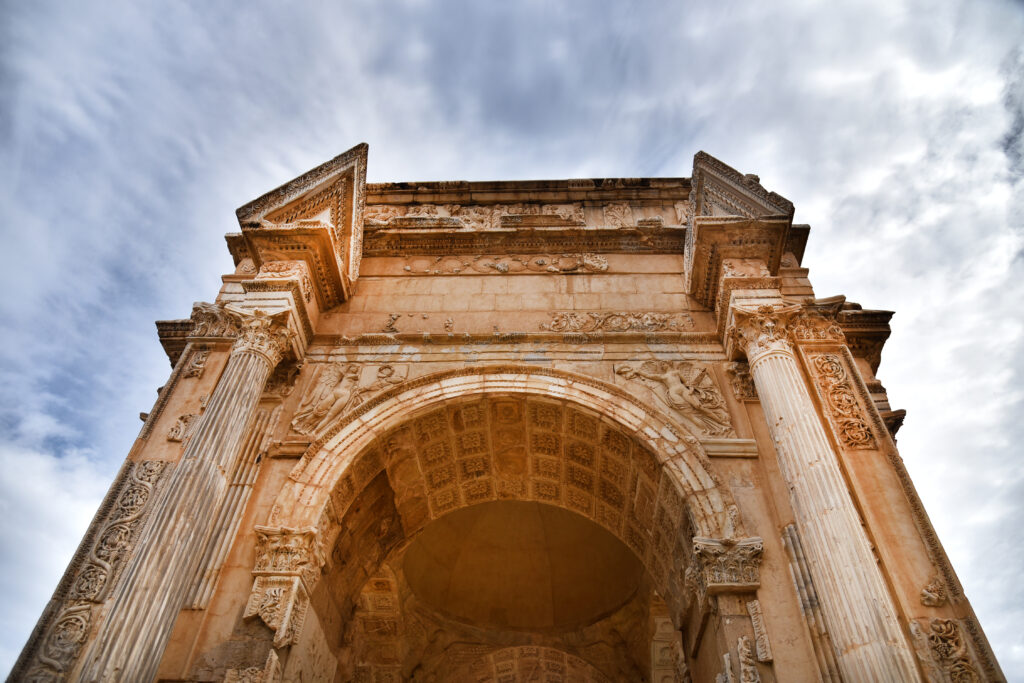Exploring the rise, glory, and rediscovery of Libya’s timeless archaeological treasure
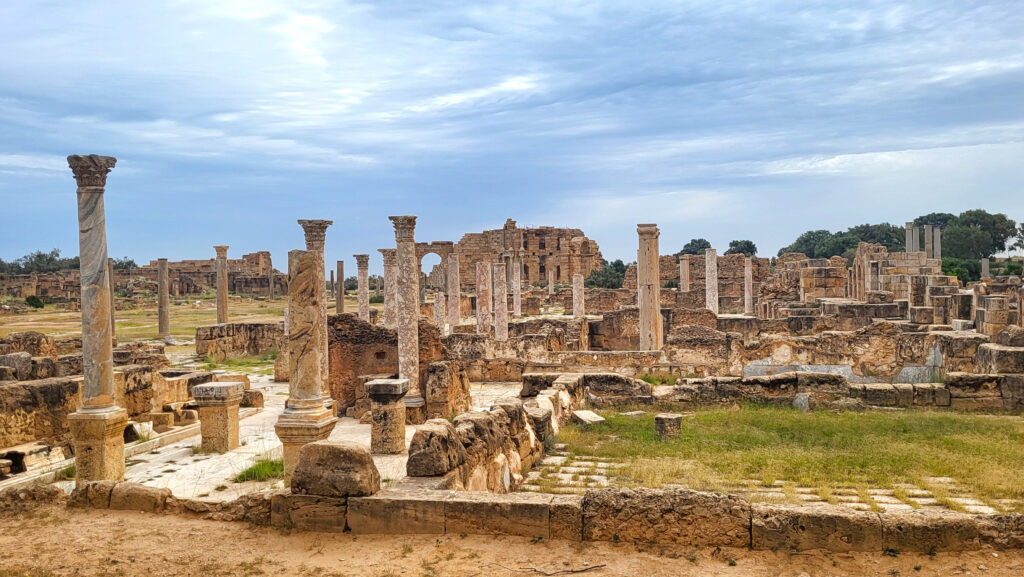 When the Romans conquered Carthage (present-day Tunis), they destroyed it in an unreasonably vengeful rage. However, they soon needed a port west of Alexandria, and their choice fell on Leptis Magna—a magnificent city now reduced to ruins.
When the Romans conquered Carthage (present-day Tunis), they destroyed it in an unreasonably vengeful rage. However, they soon needed a port west of Alexandria, and their choice fell on Leptis Magna—a magnificent city now reduced to ruins.
In 146 AD, Septimius Severus was born in Leptis into the family of a wealthy Punic merchant. As a young boy, he was sent to Roman schools and was referred to as the “True African” at the time—fluent in Punic but struggling with Latin. However, this bright young man was quickly noticed. He advanced so much at the imperial court within a few years that he became emperor. He was the first emperor born in the provinces outside Italy since Hadrian and Trajan. As mentioned, he was Punic—a people formed by blending Carthaginians and Berbers.
Septimius Severus, who ruled from 193 to 211 AD, enjoyed immense popularity due to his military successes, particularly those in the Parthian Empire from 194 to 195 AD. His reign marked an architectural renaissance for Leptis Magna. To be more precise, he was the one who transformed it. The city grew so much that it earned the title “Magna” to distinguish it from another town of the same name, which was not graced with imperial grandeur.
Everything that still captivates visitors today—partially excavated and largely ruined—was constructed during this period. Leptis Magna stands as a hauntingly beautiful reminder of its former glory, echoing the splendour of an era when it was at its zenith.
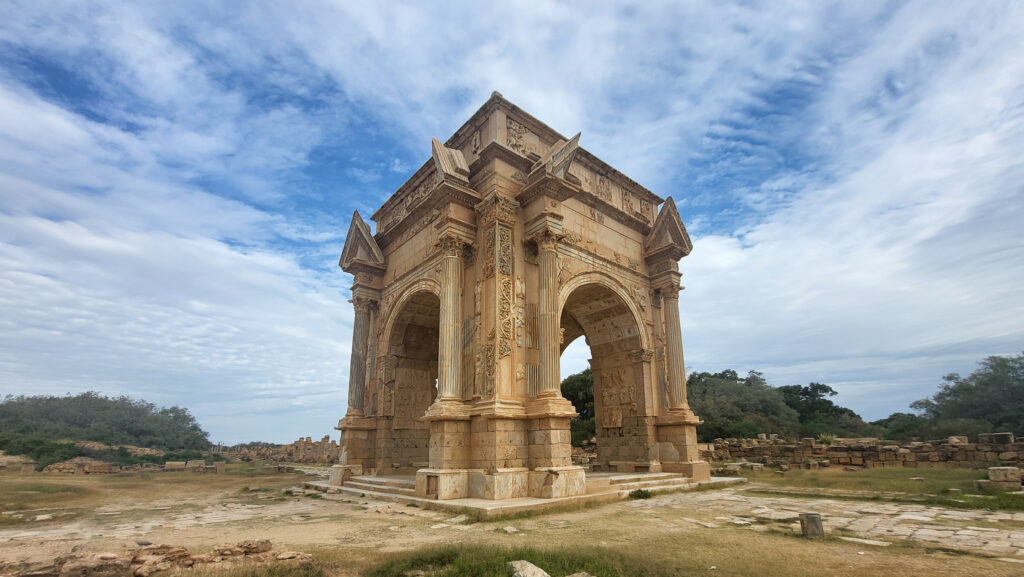 How It All Began
How It All Began
Leptis Magna started as a Phoenician colony, thriving in trade with luxury goods from Africa: ivory, ebony, gold, enslaved people, and wild animals for the circus. Specifically, it was founded by the Phoenicians from Tyre (modern-day Lebanon) and named “Lepki.” Typical of the Phoenicians, they had little love for vowels in speech and writing. Later, the Romans conquered the city and gave it the Latin name “Leptis.” Since there was another Leptis, this grand city of 50,000 inhabitants became known as Leptis Magna (Great Leptis), while the other, near Tunis, was called Leptis Minor.
As skilled merchants, the Phoenicians produced goods “for everyone,” constantly aware of and adapting to market demands. However, Rome triumphed in the centuries-long struggle for control over the central Mediterranean, imposing its rule and traditions. Over time, Leptis Magna transformed into a classic Roman city with two main streets—Cardo and Decumanus—along with theatres, marketplaces, public baths, toilets, a bustling port, and plenty of sun, olives, cheese, and wine.
The city was home to descendants of the Phoenicians, Roman colonists, and local Berbers who came from the hinterlands to settle in the new prosperous town.
Leptis Magna flourished most significantly from 193 AD when Emperor Septimius Severus—himself of Punic origin and born in the city—elevated it to prominence. During his reign, Leptis Magna stood shoulder-to-shoulder with Alexandria and Carthage.
However, in 365 AD, a devastating tsunami triggered by a massive earthquake struck the city, leaving it in ruins and beginning its decline.
The emperor’s military successes triggered a dramatic construction boom in Rome as well as in his hometown, which is now a UNESCO World Heritage Site, largely thanks to him
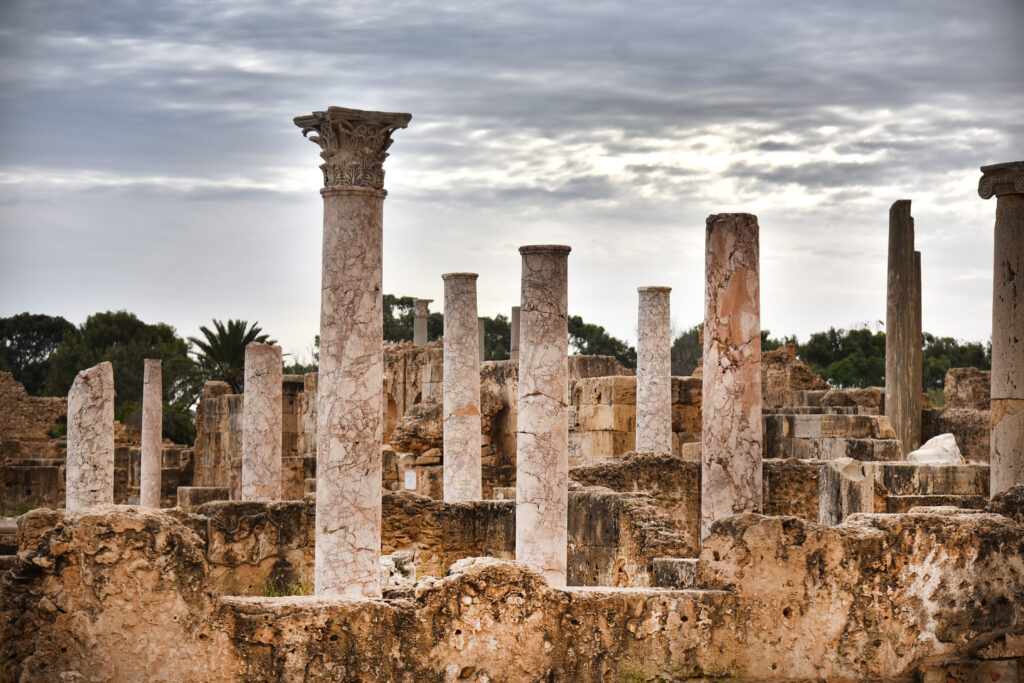 The Era of Great Glory
The Era of Great Glory
Septimius Severus was not the first to recognise the significance of Leptis Magna. Emperor Hadrian had already bestowed magnificent gifts upon the city, including stunning baths, two grand temples overlooking the harbour, and a vast thermae. However, Severus gave the city its final touch of brilliance.
As declared emperor by his troops, Septimius Severus’s reign brought a dramatic construction boom in Rome and his hometown of Leptis Magna, now a UNESCO World Heritage Site, largely thanks to his legacy. Among his architectural achievements, built to commemorate his Parthian victories, were two arches in Rome and one in Leptis Magna. While the exact date remains uncertain, it is widely accepted that the Arch of Septimius Severus in Leptis Magna was erected during his African tour in 203 AD. Though the arch had fallen into ruins, it was reassembled by Italian archaeologists after its discovery in 1928.
Constructed as a tetrapylon, the four-sided arch marked the intersection of the city’s two most important streets: Cardo, running north-south, and Decumanus Maximus, the east-west thoroughfare of this once-prominent Roman port city in Africa. The city and the arch fell into decline and were abandoned following barbarian invasions. Later, Emperor Justinian repurposed sculptures from the arch for his grand basilica.
Leptis Magna remains one of the most significant archaeological sites from antiquity and a true gem of Libyan culture—a must-visit destination for every traveller!
The rivalry of wealthy families often drove the construction of grand buildings in Leptis Magna. Competing for prestige, they spared no expense in acquiring the finest marble and hiring the best artists. One affluent patron, Hannibal Therapion Rufus, astounded his fellow citizens by financing a theatre adorned with statues and a city market featuring two elegant octagonal pavilions surrounded by numerous stalls. Meanwhile, the Flavii family was responsible for the city’s magnificent massive amphitheatre.
At its height, Leptis Magna and its inhabitants seemed to have the world at their feet, a testament to their glory during Severus’s reign.
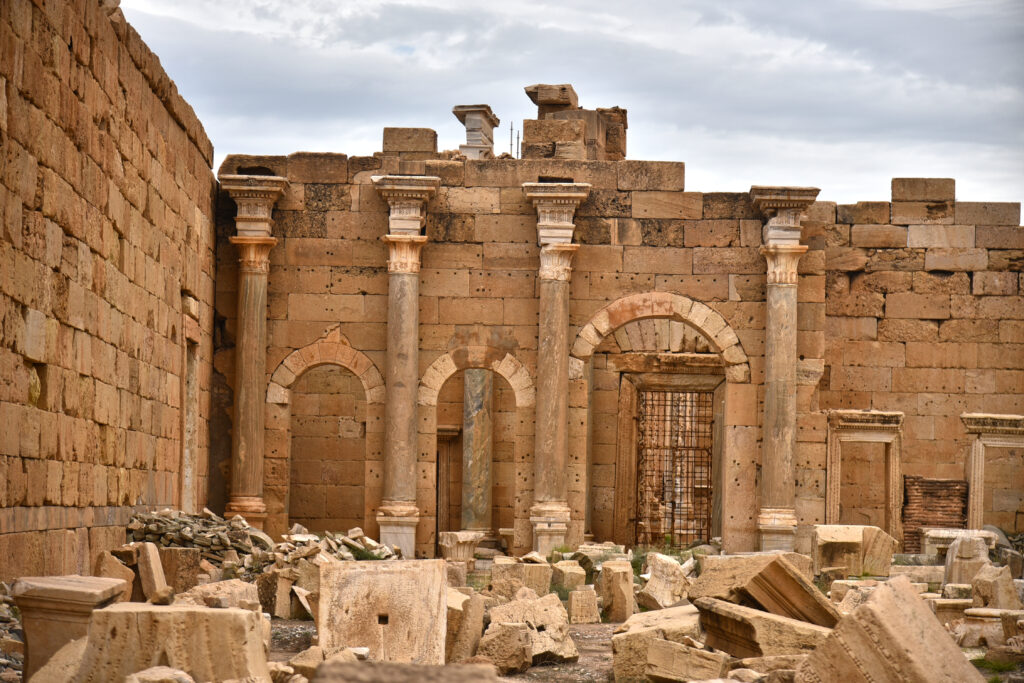 The Fall of Leptis Magna and Its Rediscovery
The Fall of Leptis Magna and Its Rediscovery
Like so many other great cities, Leptis Magna was powerless against the forces of nature. In 365 AD, after a prolonged crisis and declining trade, the town was struck by a devastating earthquake followed by a tsunami. What remained was only a shadow of its former glory. Attempts to revive the city under emperors Diocletian and Constantine proved short-lived. The town adopted Christianity during this time, but Roman authority weakened, and Berber raids became more frequent. Trade dwindled, the city grew impoverished, and its residents began to leave.
The Vandals conquered Leptis Magna, a Germanic tribe whose destructive interactions with Roman heritage earned their name a lasting association with ruin. However, they soon settled down, adopting Roman lifestyles and customs. In return, the Romans began wearing trousers and growing their hair and beards. But the Berbers from the Sahara saw an opportunity and increasingly targeted the city for plunder.
Leptis Magna, once a thriving port city of the Roman Empire, stands as a testament to ancient ingenuity and Septimius Severus’s enduring legacy
By the late 6th century, only a handful of residents remained. When the Muslims conquered the area in 647 AD, they found a small Byzantine garrison of 1,000 soldiers. The conquerors decided to settle nearby, founding the city of Homs. Stones from Leptis Magna were repurposed for their new homes, and subsequent earthquakes destroyed much of the ancient city.
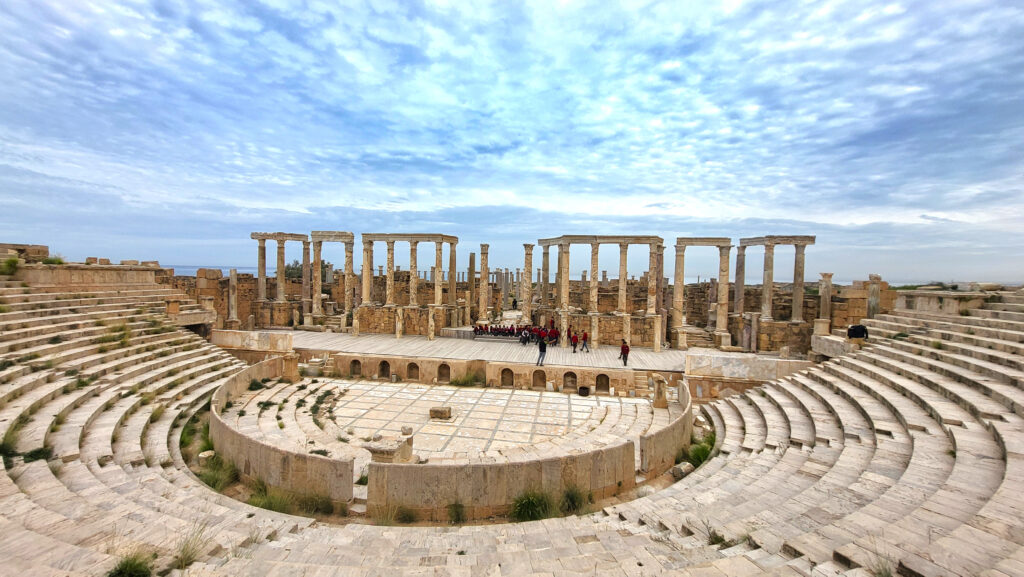 Excavations began after World War I, but Italian archaeologists discovered only 25% of the city before the outbreak of World War II.
Excavations began after World War I, but Italian archaeologists discovered only 25% of the city before the outbreak of World War II.
Today, Leptis Magna remains one of the most significant archaeological sites from antiquity and a true gem of Libyan culture—a must-see destination for any traveller!
